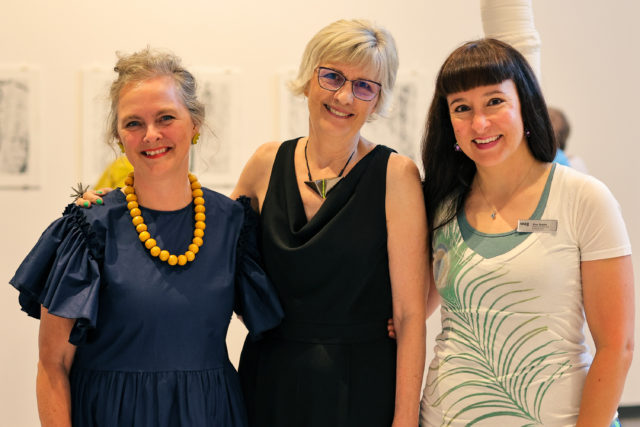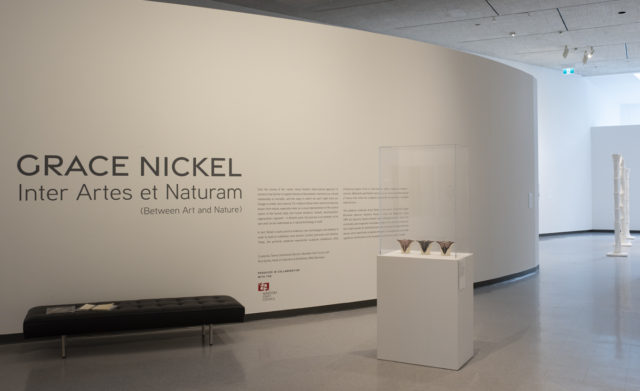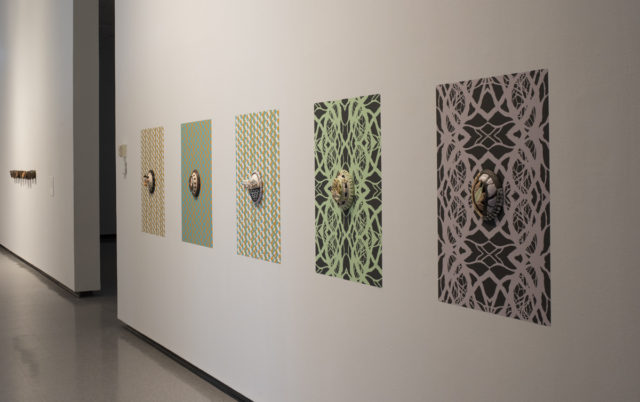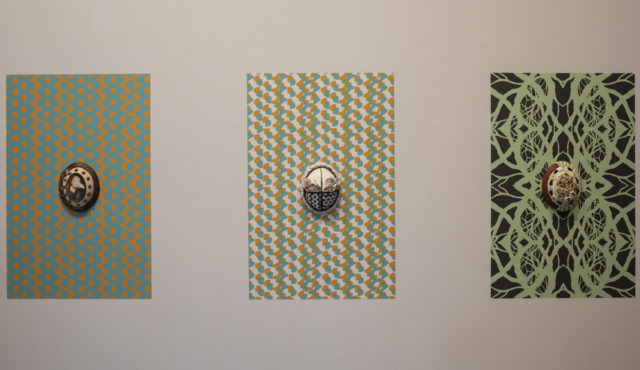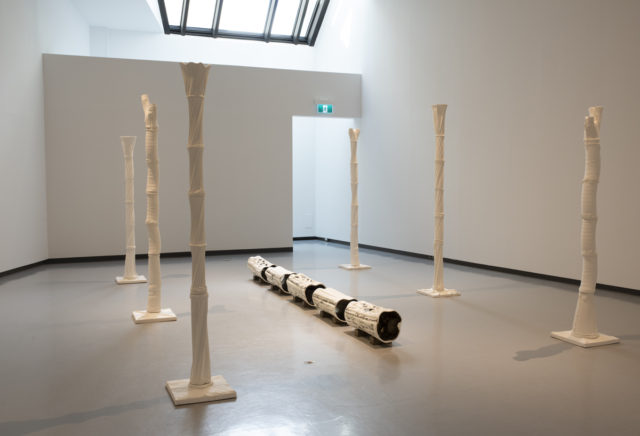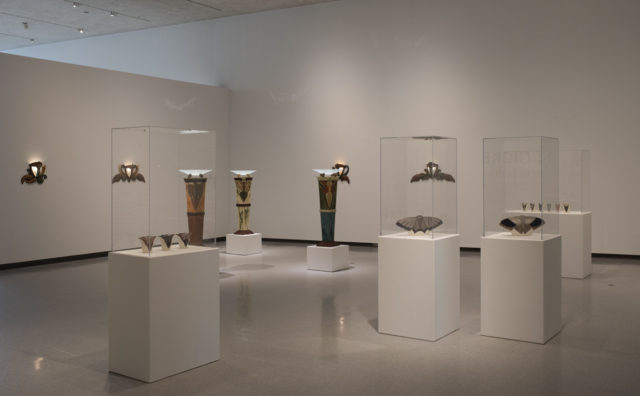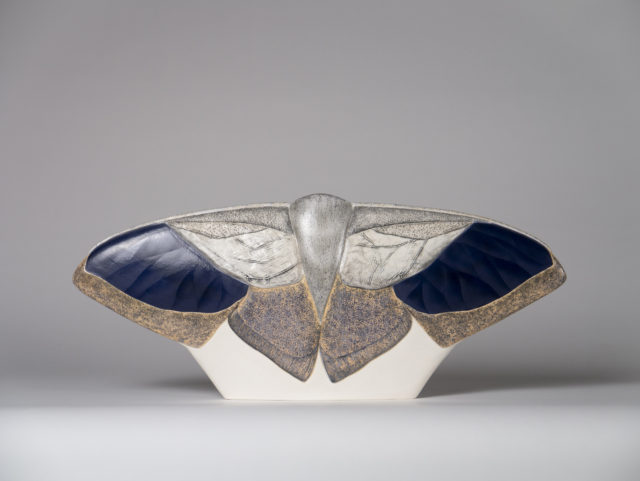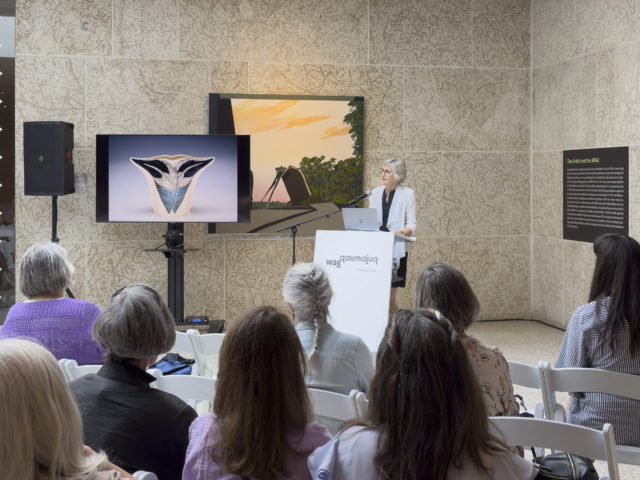Following you will find an overview of my epic journey in 2023 so far. This has included a six-month Research Study Leave (or RSL) from my teaching post at the University of Manitoba, receiving the 2023 Governor General’s Saidye Bronfman Award, and having a solo exhibition organized in my honour by the Winnipeg Art Gallery. Please enjoy my update.

My Research Study Leave began with a six-week residency in Europe. I travelled to Kecskemét, Hungary in January to work at the International Ceramic Studio (ICS), and created a new body of work based on my research on Anabaptist pottery, also known as Haban pottery. The six weeks in Kecskemét, located 80 kilometres south of Budapest, provided focussed studio time and also access to some of the world’s largest collections of Habanware. A major highlight was meeting with the Director/Curator of the Bozsó Collection, a museum situated in the heart of Kecskemét, housing a vast selection of early and classic Haban ceramics. János Bozsó, son of the original collector, met with me and I was able to access the works in the collection firsthand. Pieces were removed from their display cases and I was able to examine them closely. My goal was to determine how the pieces were made – what techniques were traditionally used and how did they do it? The production of Haban ceramics spanned from the mid 1500s to the late 1800s in Central and Eastern Europe.
At the residency at ICS in Hungary, I completed a grouping of small ceramic maquettes, followed by ten full-size pieces related to the Commemorative Cameo series I had begun before my RSL. With their oval forms, these works stand in for portraits and simultaneously relate to the many repeated ovoid forms seen in churches, and also in galleries and museums, that frame photographs or paintings. Upon observation in the various collections I saw in Europe, I also learned that the oval form relates closely to a traditional Haban form called a crespina, an oval-shaped dish with a scalloped rim. At ICS I focussed on creating a series of black cameos, experimenting with black majolica and overglaze stains, and I also created a blue-and-white series of cameos, based on later Haban works. The Haban pottery links me to my Anabaptist ancestors and the cultural tie to this historical practice has added a layer of meaning and significance to my practice that I haven’t experienced before, neither in my studio career or in my extensive studies of ceramic art history.
I also presented a lecture on my work with my fellow resident artists at ICS and spoke at the opening of the group exhibition the ICS organized on our behalf. After completing the residency in Hungary, which culminated in a group show of resident artists at ICS in Kecskemét, I conducted an extensive tour of central Europe in search of more examples of Haban ceramics. Habanware tends to be obscure and uncelebrated, although it is more prominent in Europe than in North America, where many of the descendants of the Anabaptist potters ended up. My tour included Budapest, where I sought out the Dr. Kresz Mária Alapítvány (Foundation) that is keeping the tradition of Haban alive by offering a rigorous program of workshops related to traditional Haban techniques. I enrolled in a Haban painting workshop and worked with a master painter to learn the skill of painting with overglaze stains on a white tin-glaze ground. I have continued my correspondence with the Dr. Kresz Mária Foundation and will be receiving several special books from them on Haban and Post Haban ceramics in Hungary and Slovakia (historically, northern Hungary).
After the workshop in Budapest, I continued on with my quest for increased knowledge and skill related to Haban. Highlights included a private tour of the György Ráth Villa in Budapest, which houses a remarkable collection of Art Nouveau objects, including ceramics, furniture, and textiles. I also visited the new Museum of Ethnography in Budapest, which houses over 3,000 pieces of ceramics, and I made a trek to see the stunning Zsolnay Museum, which is located in the Mediterranean city of Pécs, connected to the old Zsolnay ceramic factory known for its signature iridescent glazes.
After my tour of Hungary, I worked as an Artist in Residence for one week with a glaze master in Faenza, Italy, at the Faenza Art Ceramic Centre. Faenza is the original centre for majolica in central Europe. Just as the Haban potters originally learned their methods from Anabaptist Italian potters who had fled religious persecution in Italy and ended up in Hungary, so I reenacted the historical transfer of knowledge from an Italian master to a ceramic artist with Eastern European roots. The focus of the workshop in Faenza was on experimenting with traditional marbling techniques on majolica, using white tin glaze and suspended stain colours. Faenza is also the home of the International Museum of Ceramics, which owns one of the world’s largest collections of majolica pottery. I spent many hours absorbing the exquisite examples of in the museum.
Other stops in Italy took me to Ravenna to see the world-famous church mosaics, then it was off to Germany, France, and England to seek out ceramic collections, including the unparalleled Victoria and Albert Museum in London, the Museum of Applied Arts at the Louvre in Paris, and the Museum Brandhorst in Munich, Germany, famous for its stunning ceramic cladding consisting of hundreds of coloured square tubes.
No sooner had I returned home from my epic European research tour when my 2023 Governor General’s Saidye Bronfman Award was announced by the Canada Council. Winning the award immediately launched a flurry of activity related to the recognition of my contribution to the field of ceramics. The award recognizes my sustained studio practice and also my extensive teaching career. A commissioned Video Portrait was created for each Governor General’s Award winner and then distributed to a wide audience, including playing on all Air Canada flights from June to September 2023.
The main event inspired by my award so far has been a solo exhibition organized by the Winnipeg Art Gallery–Qaumajuq in honour of my national recognition. The exhibition, Inter Artes et Naturam (Between Art and Nature), comprises a survey spanning three and a half decades of my work in clay and also experiments with new technologies, ran from May 27 until August 27, 2023. A public reception for the exhibition took place on July 13, 2023, with tributes by Stephen Borys, Director of WAG–Qaumajuq, the Honourable Senator Patricia Bovey, my nominator Tammy Sutherland, Director of the Manitoba Craft Council, and I also delivered a speech. Lindsay Inglis wrote a review of my exhibition titled “Inter Artes et Naturam (Between Art and Nature)” for the online publication Galleries West. I delivered an artist’s talk at WAG–Qaumajuq on August 27, the final day of the exhibition. I’m happy to report that a large contingent of current and former School of Art students were present in the audience.
In addition to the solo exhibition, an extensive article by Tammy Sutherland was published in honour of my GGArts Award in Studio Magazine, Canada’s only journal on contemporary craft and design. The Winnipeg Free Press published two articles by Alan Small – first to announce my Governor General’s Award in the Visual and Media Arts, and the second one addressed my exhibition at WAG–Qaumajuq and the special reception held in celebration of my award. I was also interviewed on CTV’s Your Morning show twice, once in their studios when my award was announced and then again once my exhibition was set up and and an interview took place in the gallery itself.
I participated in two other exhibitions during my RSL including The LOOK show in May 2023 at Video Pool in Winnipeg’s Exchange District, a multi-artist collaborative project led by writer Victor Ens, and Axis of Art – Women in Clay, an exhibition featuring work by female ceramic artists from across Canada, at the Jonathon Bancroft-Snell Gallery in London, Ontario, running from August 10 to September 3, 2023.
As a follow-up to my RSL, and a summarizing of the research I conducted during my sabbatical, I will be speaking at the Nomadisms Conference on September 28, 2023, presenting my research on Anabaptist/Haban ceramics. The Nomadisms conference constitutes the 7th University of Szeged–University of Manitoba Partnership Conference and will take place from September 28 to 30, 2023, at the University of Manitoba. I will speak about my discoveries in Europe and the technical explorations I have been conducting both at home and abroad, informed by my new-found interest in the ceramics linked to my Anabaptist heritage. My conference talk is titled “Anabaptist Potters: A Historical and Contemporary Legacy.”
Beyond that, upcoming activity includes a group exhibition at the National Gallery of Canada of all the Governor General’s Award winners in Visual and Media Arts, opening on December 7, 2023, and a GGArts medals ceremony, which will take place at Rideau Hall with the Her Excellency the Right Honourable Mary Simon hosting, on December 8, 2023.
Thank you for supporting my request for a six-month sabbatical, which allowed me to delve into an intensive time of research, creation, and a celebration of my sustained contribution to ceramics and teaching.
